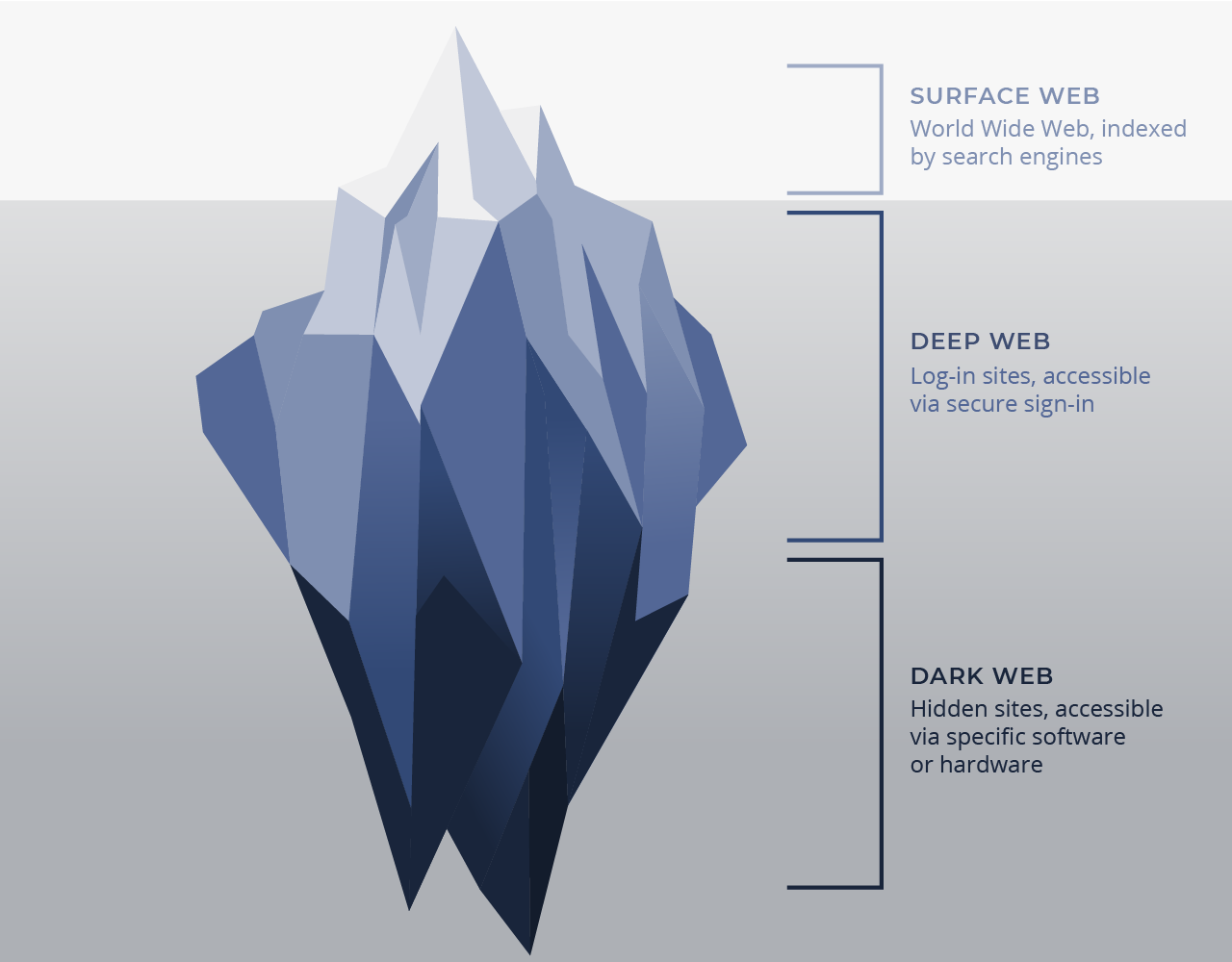

#Surface web deep web iceberg how to
Thus, although these pages are not technically “hidden,” they can be challenging to find, unless you know how to look for them. To access such pages, users must either know the account credentials or have a specific URL or IP address. Further, this content is usually password-protected or placed behind a paywall. Even parts of subscription paid subscription services like Netflix are on the deep web.

The deep web contains data or content that’s stored in databases and that support services on the surface web, e.g., social media platforms or bank websites. It also includes websites that simply choose not to be ‘crawled’ by search engines. The likelihood that you’re using the deep web daily is high because the deep web doesn’t just refer to websites protected by passwords. The deep web comprises all the pages that are not indexed by search engines, and are therefore not visible on Search Engine Results Pages (SERPs). If the deep web didn’t support sites on the clear web, the clear web would not exist or be useless. To take the analogy one step further, the portion of the iceberg beneath the water serves an important role in supporting the tip of the iceberg. As many know, the iceberg illusion refers to the much larger portion of the iceberg that’s hidden beneath the water, just like the deep web. Many describe the deep web as the part of an iceberg that’s below water and the clear web is what’s visible above water. How can you best describe their compatibility? The Iceberg Analogy.

Despite this, they work together to provide the world’s most powerful websites. The Iceberg Analogy: How do they fit together?īoth the clear and deep web can be accessed through any regular browser but, as noted above there are distinct differences between the two. Where the deep web accounts for approximately 7,500 TB of data, the clear web is only responsible for a mere 19 TB which is equivalent to 980,000,000 websites. The surface web is like a small lake compared to the vast ocean that is the deep web. All these sites are part of the surface or “clear” web.īut if you think the surface web is a vast place, think again. You access these and many other websites through an Internet browser like Firefox, Chrome or Internet Explorer, or through a search engine like Google. However, this is erroneous, because the two are not the same. The terms deep web and dark web are often used interchangeably. What about the remaining 96%? This is what’s known as the “deep web.” The deep web comprises the “gated” internet, or to put it simply, pages that aren’t easily accessible.
#Surface web deep web iceberg professional
Like billions of others, you probably use the Internet to find answers, buy consumer goods, communicate with others, enjoy leisure activities, and meet your professional responsibilities.īut how much do you really know about this vast, modern-day version of the Library of Alexandria?įor example, are you aware that the Internet you use is the “surface” web, and that it comprises only 4% of the entire network? Search engines index websites on the surface web, and these are the pages you see and use.


 0 kommentar(er)
0 kommentar(er)
